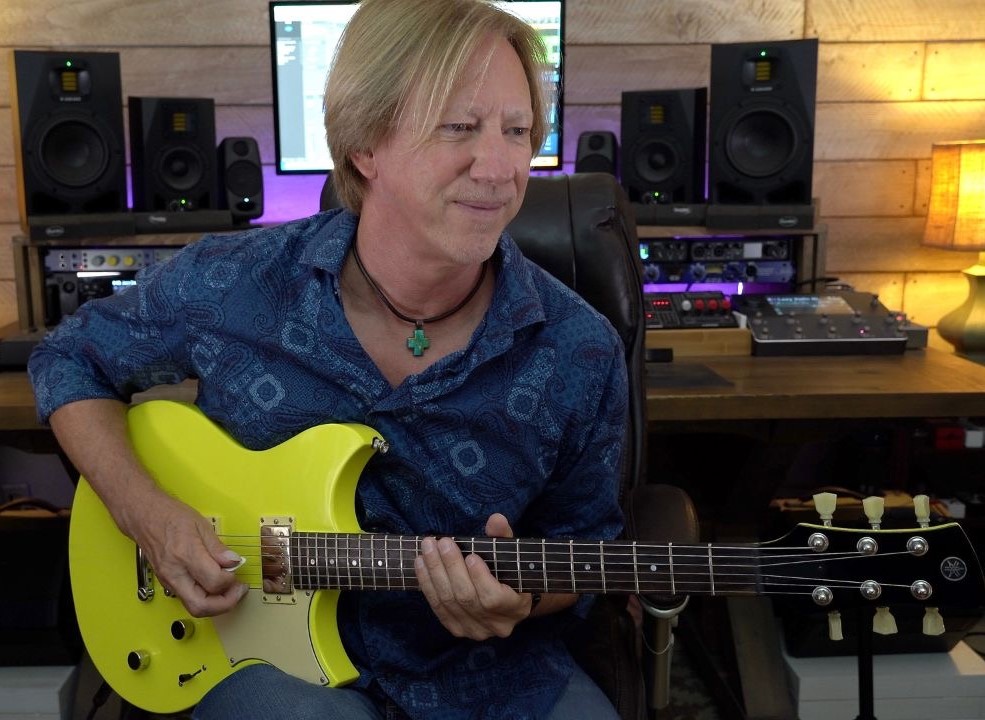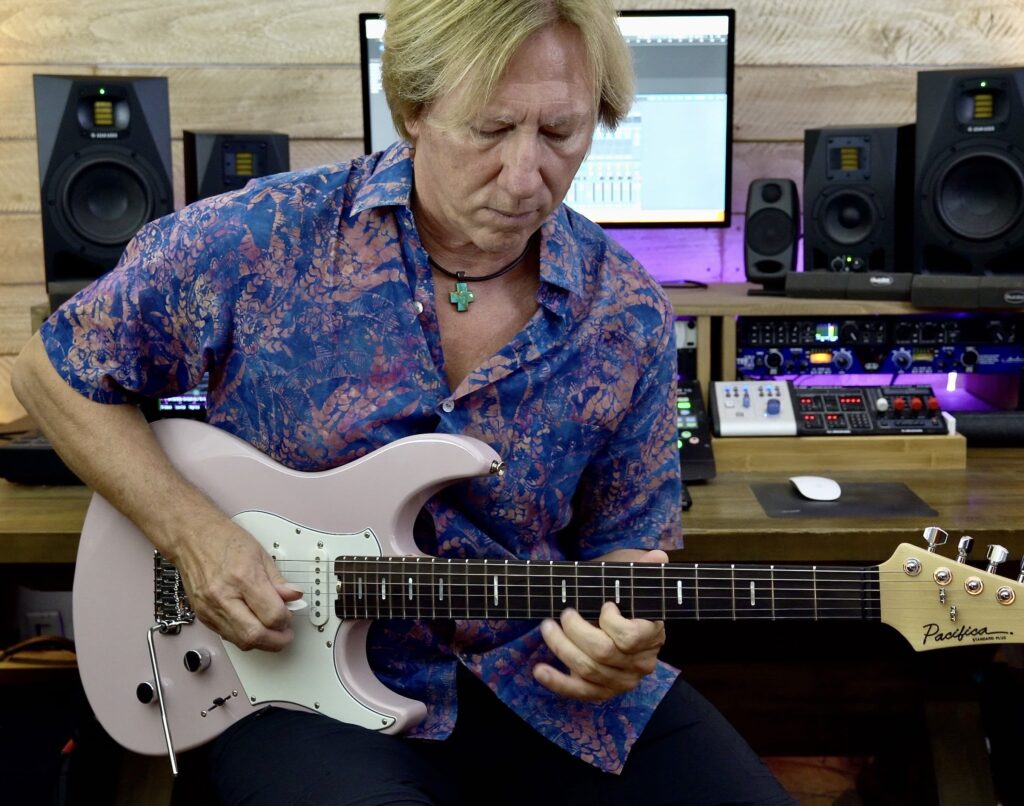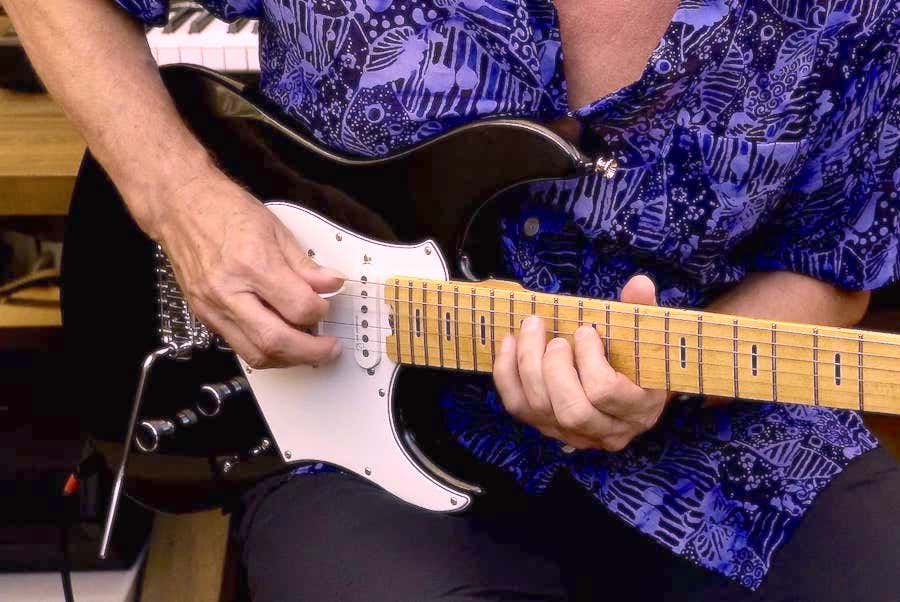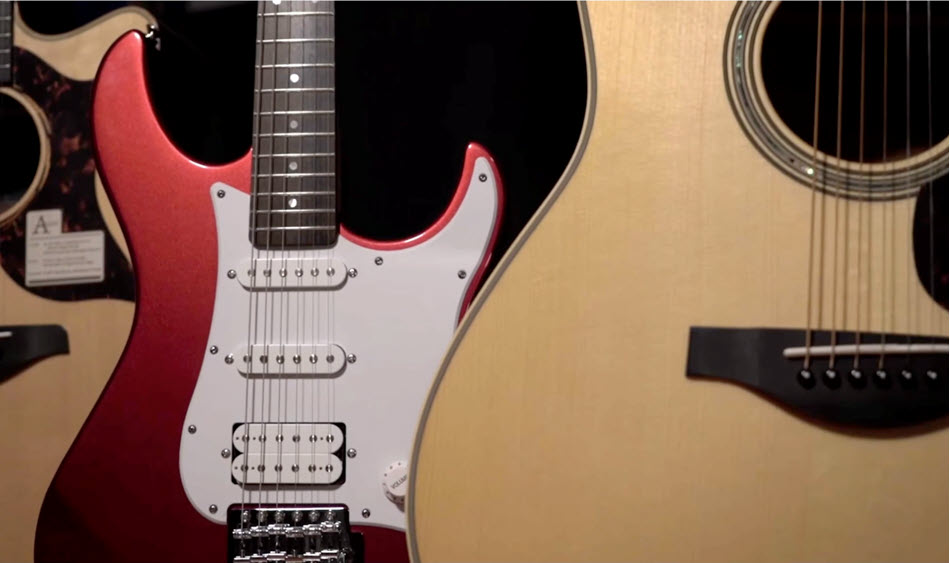How To Play Guitar Double-Stops
These chord fragments can bring a new aspect to your playing.
As a guitar teacher, I’m always taking inventory of the techniques and approaches I’d like to share with my roster of students. Those ideas need to have artistic value, cover a variety of musical genres, and sound amazing … with minimal effort. One of my favorite techniques developed into a full-blown online guitar tutorial called “Double-Stop Chops,” and double-stops are what I’ll be talking about in this posting.
WHAT ARE DOUBLE-STOPS?
Double-stops are simply two notes of different pitches played at the same time. Technically, they’re known as dyads: two-note chord fragments. (A chord, by definition, must contain at least three notes.) When we view these powerful little nuggets as partial chords, we can better see how they relate to the larger full chordal shapes and use them to outline the parent chord in a progression.
I’ve long experienced the sonic power of double-stops at my live performances, where I often use them to create memorable hooks, motifs and solos. I also discovered that they help to reduce the hand fatigue I’d often feel at the end of a three-hour show. Essentially, double-stops provide twice the melodic impact without the dexterity needed for single-note lines.
There are several specific double-stops that are commonly used to create consonant, melodic phrases on guitar, namely:
- Major and minor thirds
- Fourths
- Major and minor sixths
- Octaves (the root note of a chord, combined with the same tone an octave higher)
All these intervals reside within the major scale and relate directly to the chordal harmony derived from that seven-note scale. For example, in the key of C:
| Scale Position | I | II | III | IV | V | VI | VII |
| Diatonic Chord | Cma7 | Dmi7 | Emi7 | Fma7 | G7 | Ami7 | Bmi7(♭5) |
| Type of Third | Maj3 | Min3 | Min3 | Maj3 | Maj3 | Min3 | Min3 |
| Type of Fourth | Perfect | Perfect | Perfect | Augmented | Perfect | Perfect | Perfect |
| Type of Sixth | Maj6 | Maj6 | Min6 | Maj6 | Maj6 | Min6 | Min6 |
The chart above shows the kinds of double-stops that exist within the listed chords. However, you don’t have to adhere to outlining each chord; with double-stops, you can create melodies that glide across the harmony as if using single notes.
Interestingly, every other double-stop will also be a chord tone from the original chord. For example, if you play a major third double-stop over a Cma7 chord, the tones are C and E (root and major third). If you then play an Emi7 chord minor third double-stop, the tones are E and G (root and minor third.) Both of those tones (the major third and perfect fifth) are also in the Cma7 chord.
Taking things one step further, if you play a major third double-stop from the G7 chord (root and major third), the notes it contains (G and B) are also in the Cma7 chord (where they serve as the perfect fifth and major seventh). When playing double-stop sequences, every other double-stop will often be a chord-tone resolution, and will therefore sound extremely strong over the original chord.
DOUBLE-STOP SHAPES
Each double-stop has a unique shape. Major and minor thirds adhere to the same shapes across the string pairs on the fretboard except on the G and B string. This is because the interval between the open G and B strings is a major third, as opposed to every other string pairing’s interval of a fourth.
Fourths adhere to the same shape except on the G and B strings, and also when the fourth interval is related to the IV chord. Fourths on a IV chord are augmented (sharpened by a semitone).
Sixths adhere to the same two shapes (major and minor), and because these shapes are divided by a string, you don’t have to worry about the discrepancy between the G and B string.
Octave intervals are also created by skipping a string. Creating octaves from a D- and G-string root note will give you its octave pitch four frets higher on the B and E strings, respectively. Octaves can be found three frets higher when the root note is located on the E and A strings.
The chart below shows the double-stop shapes for major and minor thirds, fourths, and major and minor sixths, as well as octaves, laid out across the fretboard in the key of C major/A minor. You’ll want to learn these as linear sequences in order to create musical ideas and melodies. When played in a linear fashion, you’ll also be able to hear the complete major scale within each sequence and will start to relate each shape and location with its “parent” major scale chord.
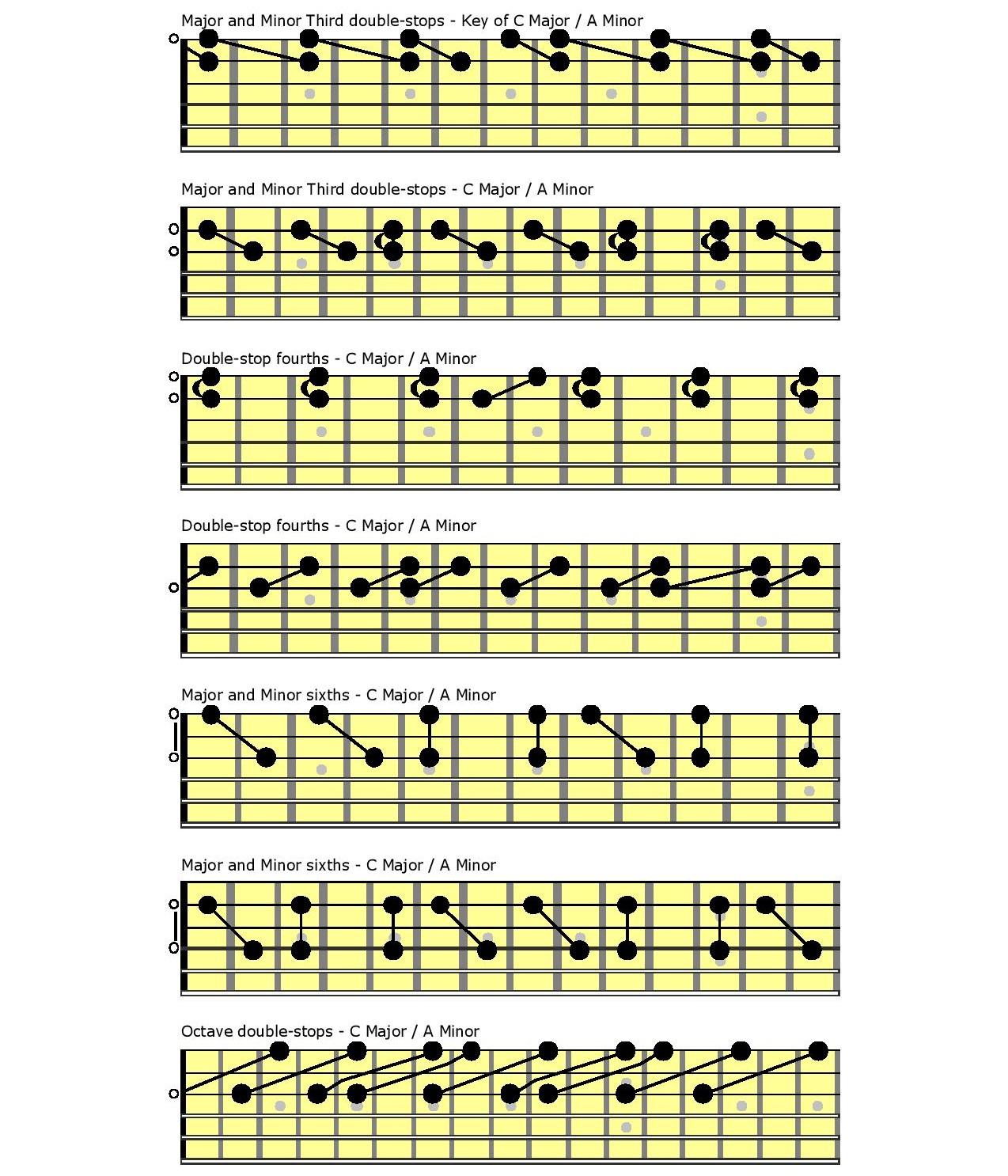
Diatonic Harmony/Triads
In this next chart, I’ve laid out the harmonized major scale of C as triads, indicating the major and minor thirds within those shapes. Take a moment to play through the sequence of chords, then play the two-note double-stops. You’ll still be able to hear the scale position of the chord even without the full body of each chord.
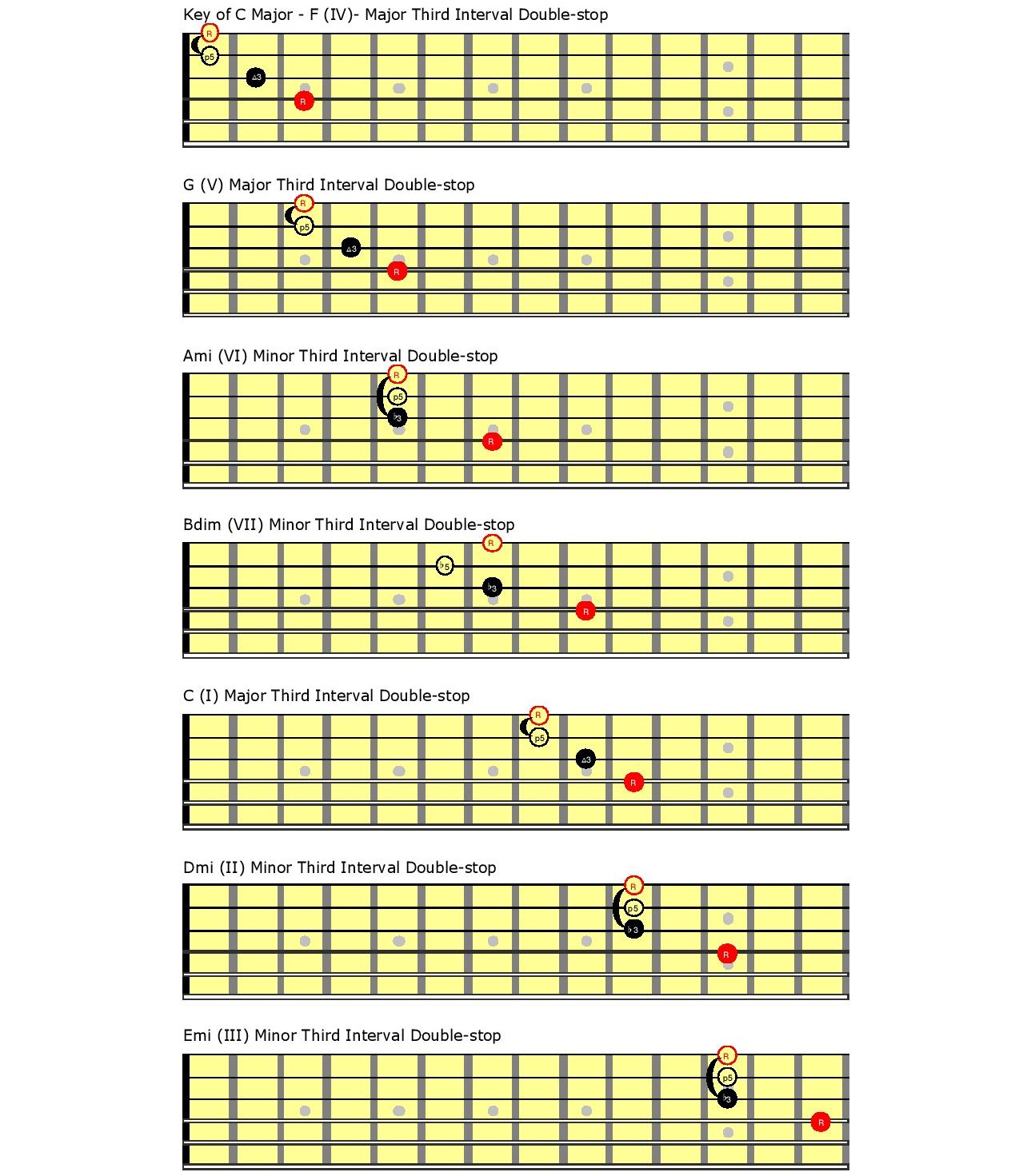
Devote a few practice sessions to going through all seven chords and playing the double-stop shapes within them. If you spend enough time on this, you’ll be able to outline chord progressions with ease and create amazing double-stop sequences when improvising.
Shapes Within Shapes
There are additional double-stop shapes within each of those simple triad chord shapes. Here’s a diagram of the C chord showing other double-stops within its four-note framework:
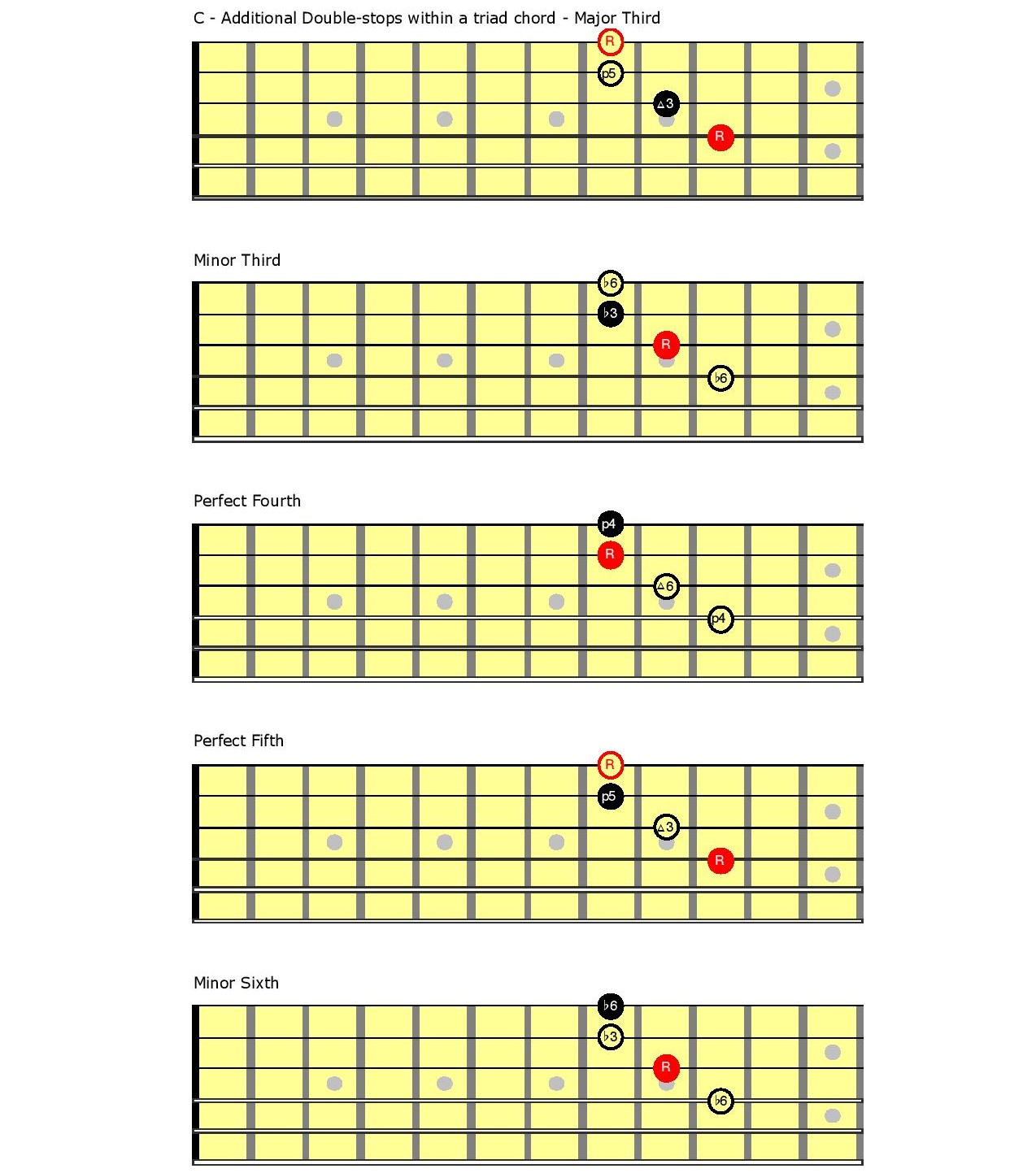
Interesting to see that there are minor third and minor sixth intervals within a major chord, isn’t it?
ARTICULATION
I find that I can best vary the dynamic and volume of each of the two tones if I use my fingers. I prefer to play double-stop licks and phrases with my thumb and first finger, although sometimes I use my third finger as well. You could choose to use a pick instead, but achieving wider intervals like sixths and octaves that way is considerably more challenging.
You’ll notice in the video below that I often slide between double-stop shapes, and also sometimes play each of the two tones separately for an intervallic effect (a series of notes separated by space or time). It’s an art form I really enjoy and something I consider a huge part of my playing style.
THE VIDEO
In this video, I play each of the four double-stop types in sequence, starting with major and minor thirds. Note how I use my fingers to articulate them, and how I’m actually creating melodies — not just linear runs — from those shapes. The solo crescendos employ ascending octave runs. At the end, I add a touch of a wah effect to expand the sonic palette.
You’ll also see me mixing double-stops with single-note lines. Don’t be afraid to mix and match the different shapes, double-stops and scale runs within your solos.
THE GUITAR
I played all of the rhythm and lead guitar parts in the above video using the versatile Yamaha Pacifica PAC612VIIFM. I used the Seymour Duncan middle and neck pickup combination for most of the tones, along with some lovely Wilkinson tremolo (“whammy bar”) shimmers on some of the rhythm parts.
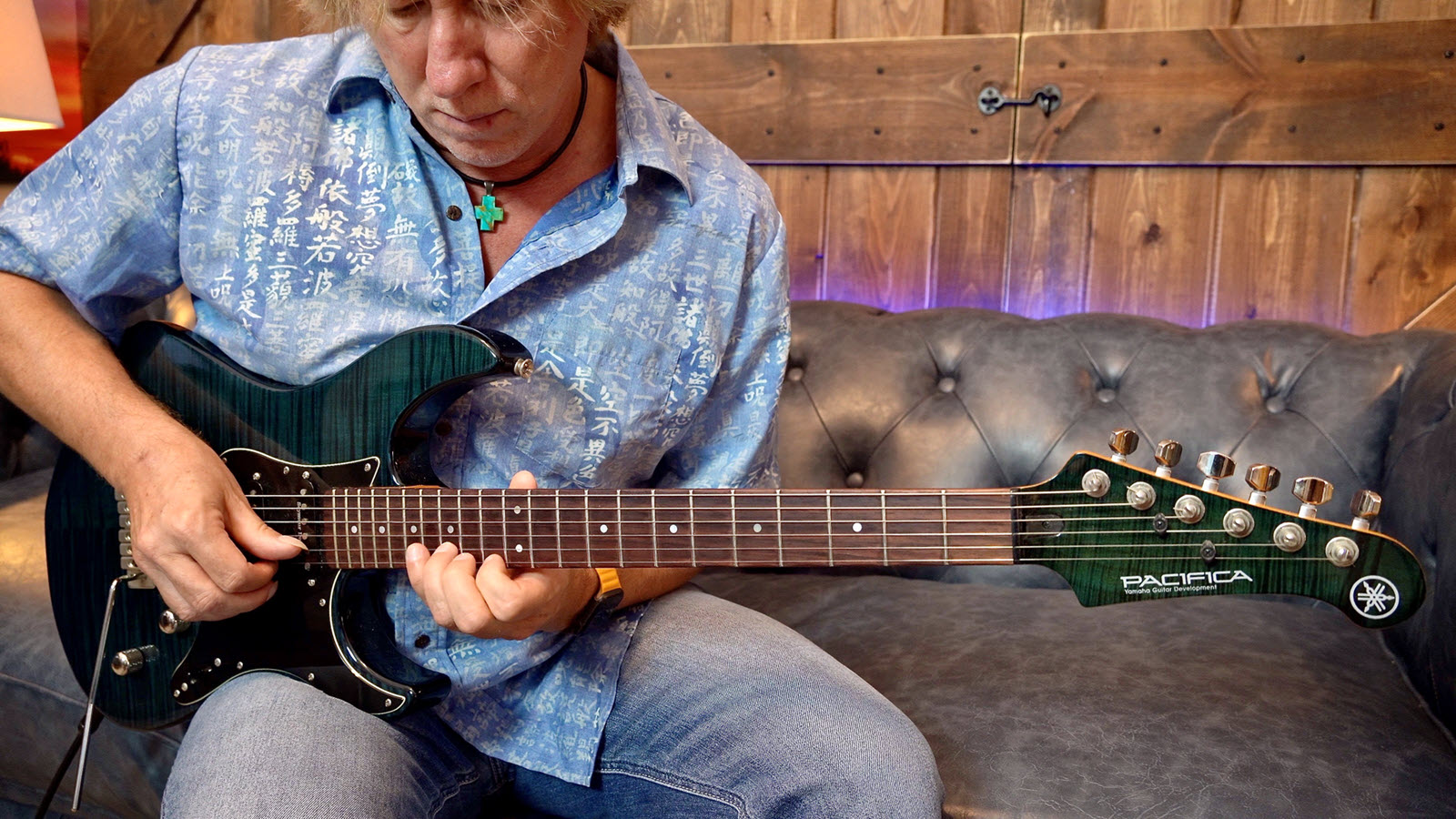
This guitar not only sounds and plays beautifully, its looks are striking as well, thanks to its gorgeous Indigo Blue flame maple top.
THE WRAP-UP
Deep within the framework of regular three- and four-note chords lies the backbone of rock ’n’ roll and soundtrack to its history. Double-stop chord fragments of all shapes and sizes have long been woven together to create classic rock, pop, and rhythm and blues intros, melodies and motifs. As a bonus, if you play these intricate self-harmonized lines on a steel-string acoustic or nylon-string classical guitar, you’ll also evoke the twang of country music and the romantic flair of Latin, jazz and classical composition. Amazing what two notes can do!
Photographs courtesy of the author.











